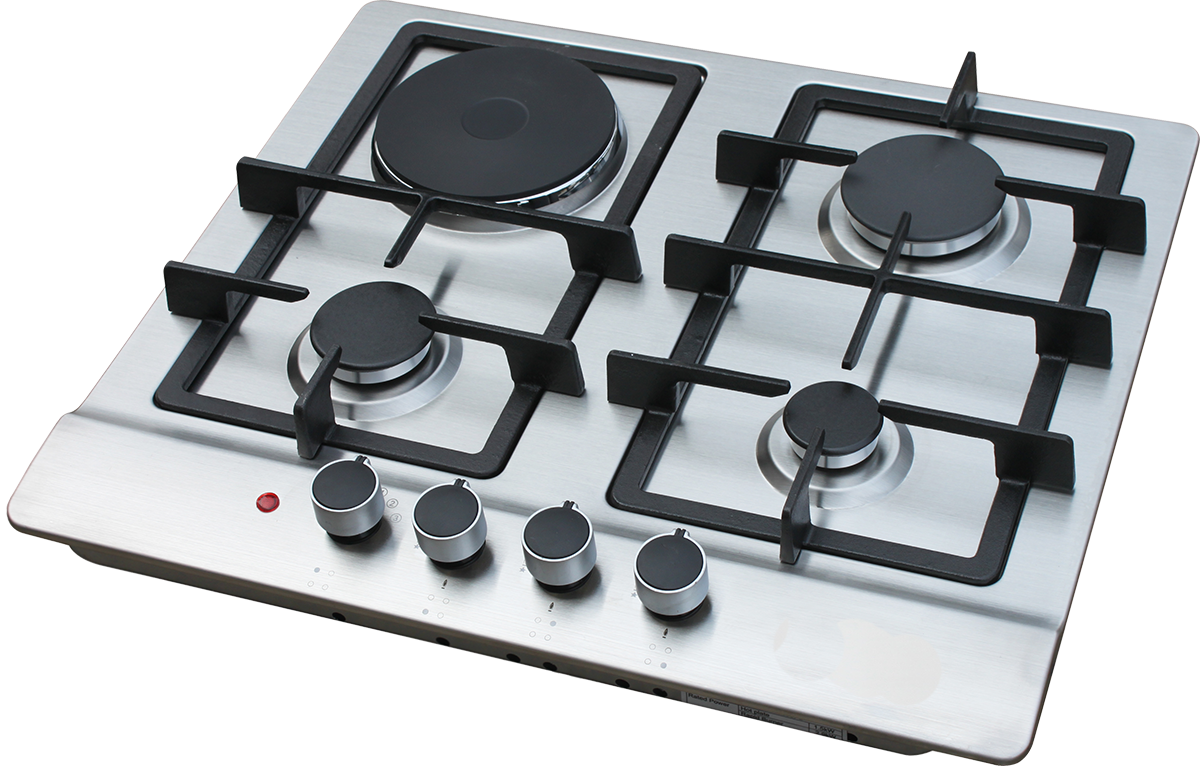
This image has format transparent PNG with resolution 1200x766.
You can download this image in best resolution from this page and use it for design and web design.
Gas stove PNG with transparent background you can download for free, just click on download button.
A gas stove is a stove that is fuelled by combustible gas such as syngas, natural gas, propane, butane, liquefied petroleum gas or other flammable gas. Before the advent of gas, cooking stoves relied on solid fuels such as coal or wood. The first gas stoves were developed in the 1820s and a gas stove factory was established in England in 1836. This new cooking technology had the advantage of being easily adjustable and could be turned off when not in use. The gas stove, however, did not become a commercial success until the 1880s, by which time supplies of piped gas were available in cities and large towns in Britain. The stoves became widespread on the European Continent and in the United States in the early 20th century.
Gas stoves became more wieldy when the oven was integrated into the base and the size was reduced to better fit in with the rest of the kitchen furniture. By the 1910s, producers started to enamel their gas stoves for easier cleaning. Ignition of the gas was originally by match and this was followed by the more convenient pilot light. This had the disadvantage of continually consuming gas. The oven still needed to be lit by match and accidentally turning on the gas without igniting it could lead to an explosion. To prevent these types of accidents, oven manufacturers developed and installed a safety valve called a flame failure device for gas hobs (cooktops) and ovens. Most modern gas stoves have electronic ignition, automatic timers for the oven and extractor hoods to remove fumes.
The first gas stove was developed in 1802 by Zachäus Winzler (de), but this along with other attempts remained isolated experiments.[1] James Sharp patented a gas stove in Northampton, England in 1826 and opened a gas stove factory in 1836. His invention was marketed by the firm Smith & Philips from 1828. An important figure in the early acceptance of this new technology, was Alexis Soyer, the renowned chef at the Reform Club in London. From 1841, he converted his kitchen to consume piped gas, arguing that gas was cheaper overall because the supply could be turned off when the stove was not in use.
A gas stove was shown at the World Fair in London in 1851, but it was only in the 1880s that the technology became a commercial success in England. By that stage a large and reliable network for gas pipeline transport had spread over much of the country, making gas relatively cheap and efficient for domestic use. Gas stoves only became widespread on the European Continent and in the United States in the early 20th century.
Early gas stoves were rather unwieldy, but soon the oven was integrated into the base and the size was reduced to fit in better with the rest of the kitchen furniture. In the 1910s, producers started to enamel their gas stoves for easier cleaning.
Gas stoves today use two basic types of ignition sources, standing pilot and electric. A stove with a standing pilot has a small, continuously burning gas flame (called a pilot light) under the cooktop. The flame is between the front and back burners. When the stove is turned on, this flame lights the gas flowing out of the burners. The advantage of the standing pilot system is that it is simple and completely independent of any outside power source. A minor drawback is that the flames continuously consume fuel even when the stove is not in use. Early gas ovens did not have a pilot. One had to light these manually with a match. If one accidentally left the gas on, gas would fill the oven and eventually the room. A small spark, such as an arc from a light switch being turned on, could ignite the gas, triggering a violent explosion. To prevent these types of accidents, oven manufacturers developed and installed a safety valve called a flame failure device for gas hobs (cooktops) and ovens. The safety valve depends on a thermocouple that sends a signal to the valve to stay open. Although most modern gas stoves have electronic ignition, many households have gas cooking ranges and ovens that need to be lit with a flame. Electric ignition stoves use electric sparks to ignite the surface burners. This is the "clicking sound" audible just before the burner actually lights. The sparks are initiated by turning the gas burner knob to a position typically labeled "LITE" or by pressing the 'ignition' button. Once the burner lights, the knob is turned further to modulate the flame size. Auto reignition is an elegant refinement: the user need not know or understand the wait-then-turn sequence. They simply turn the burner knob to the desired flame size and the sparking is turned off automatically when the flame lights. Auto reignition also provides a safety feature: the flame will be automatically reignited if the flame goes out while the gas is still on—for example by a gust of wind. If the power fails, surface burners must be manually match-lit.
Electric ignition for ovens uses a "hot surface" or "glow bar" ignitor. Basically it is a heating element that heats up to gas's ignition temperature. A sensor detects when the glow bar is hot enough and opens the gas valve.
Also stoves with electric ignition must be connected with gas protection mechanisms such as gas control breaker. Because of this many manufacturers supply stoves without electricity plug.
In this clipart you can download free PNG images: Gas stove PNG images free download